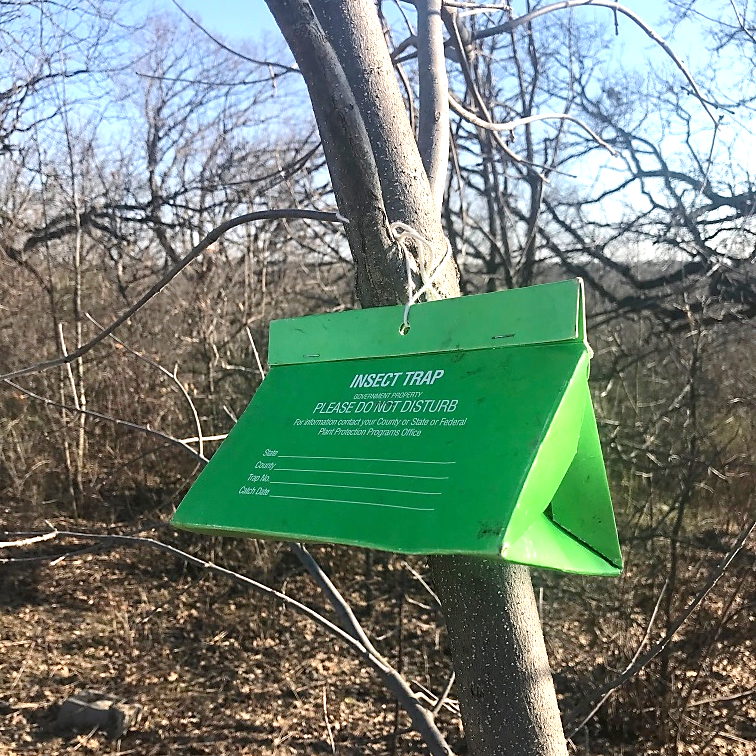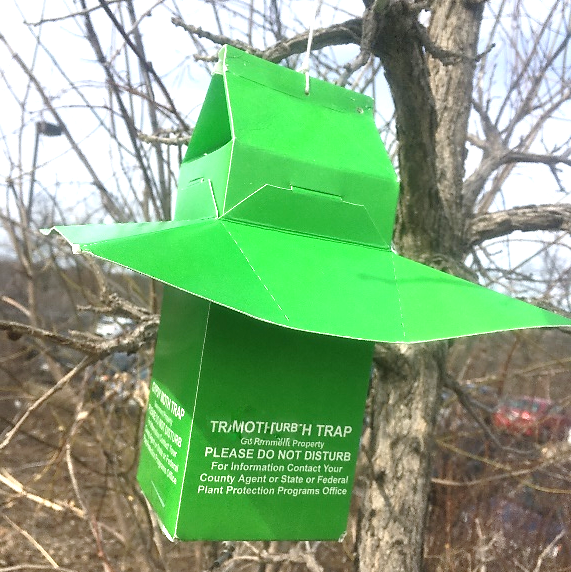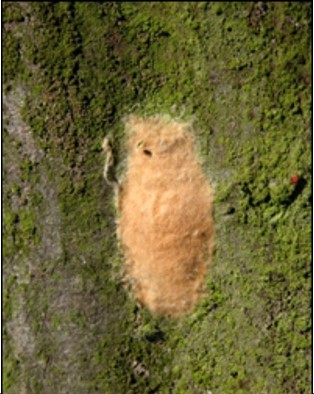The Wisconsin Department of Agriculture, Trade and Consumer Protection (DATCP) uses traps and visual surveys to monitor the spread of
spongy moth (Lymantria dispar). By setting traps according to a scientific grid with GPS technology, the DATCP Slow the Spread program is able to plan the next year's
aerial spray program to halt the insect's westward expansion in Wisconsin and the United States as a whole.
To find more information on DATCP's Slow the Spread program, visit our spongy moth portal
here. To find up-to-date trapping data, visit this
map or visit the national Slow the Spread page
here.
Trapping
Spongy moth traps do not control populations. They only measure population levels. We set them May-June, check them June-August, and remove them August-September.
Traps contain a plastic strip coated with pheromone, or the scent of the female moth, and are coated inside with a sticky substance. Males fly into the traps looking for a mate and become stuck. Traps catch only male moths.
There are two types of traps. We set delta traps in areas where we expect numbers to be low, because they hold only 20 moths. We set milk carton traps where we expect higher numbers, because they can hold up to 1,500 moths.
Please:
-
If you see a trap, do not disturb it.
-
If you find a trap on the ground, call the number written on it to report it.
-
Allow trappers to place traps on your property and return to check and remove them.
|

Delta Trap
|

Milk Carton Trap
|
Trappers will attempt to contact you if your property is within the grid, and ask permission to set the trap. If they cannot reach you, they will set the trap and leave information so you can call if you have questions. Wisconsin law does allow DATCP to go onto private property to inspect, investigate or control plant pests and diseases.
See Wisconsin Statute 94.01.
We hire seasonal workers to set, check and remove
spongy moth traps every year. Watch this website for application information in March.
Egg Mass Survey
 We conduct egg mass surveys in October and November in areas where we have trapped high numbers of male moths. This tells us where
spongy moth are reproducing. Our own staff and some of the seasonal trappers do this work, visually inspecting trees.
We conduct egg mass surveys in October and November in areas where we have trapped high numbers of male moths. This tells us where
spongy moth are reproducing. Our own staff and some of the seasonal trappers do this work, visually inspecting trees.
Please allow egg mass surveyors onto your property. They will attempt to contact you to ask permission, and will leave information and a contact number if they cannot reach you. Wisconsin law does allow DATCP to go onto private property to inspect, investigate, or control plant pests and diseases. Refer to Wisconsin Statute 94.01.
(Photo: Spongy moth egg mass, forestryimages.org)